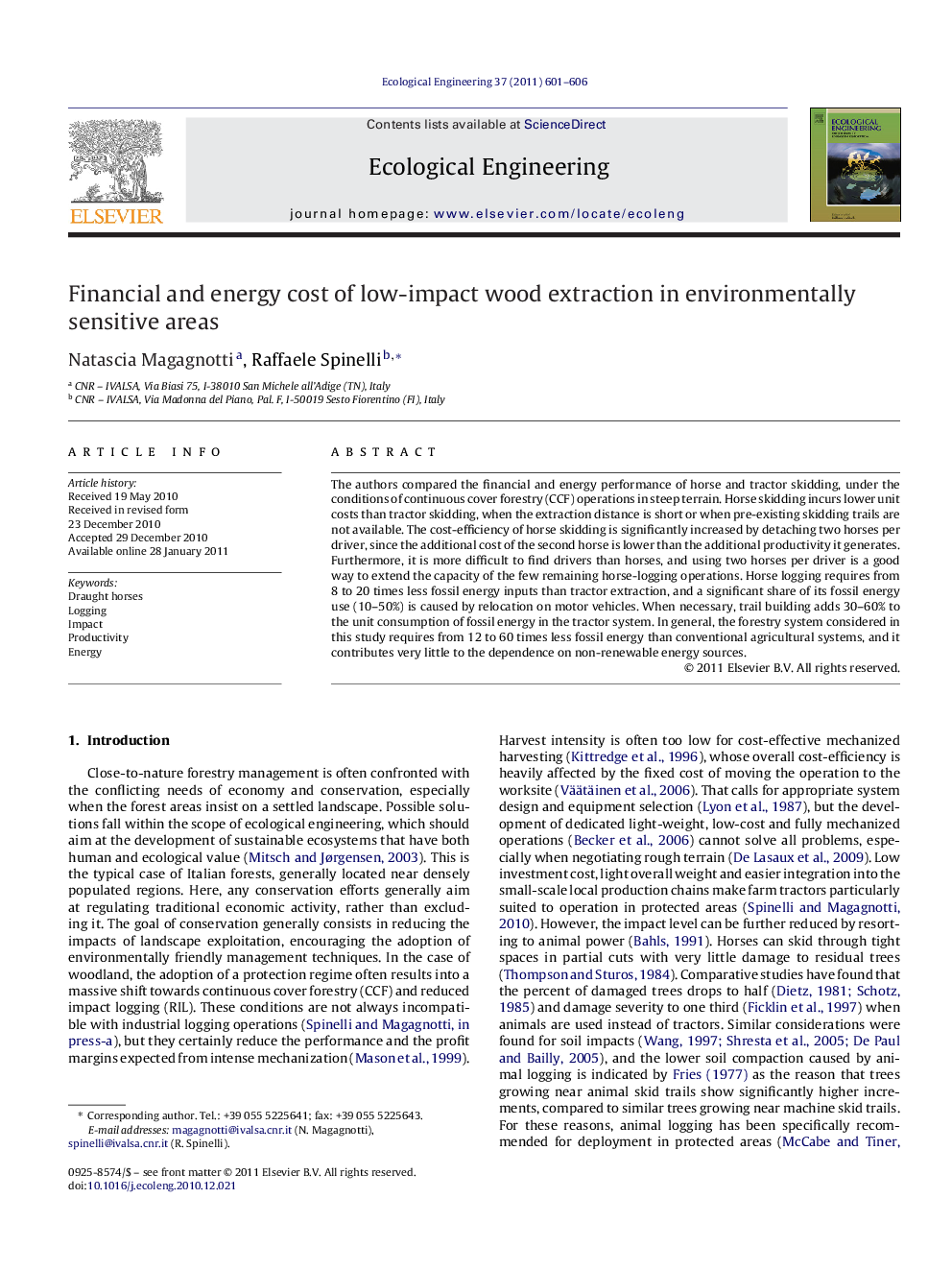| Article ID | Journal | Published Year | Pages | File Type |
|---|---|---|---|---|
| 4390297 | Ecological Engineering | 2011 | 6 Pages |
The authors compared the financial and energy performance of horse and tractor skidding, under the conditions of continuous cover forestry (CCF) operations in steep terrain. Horse skidding incurs lower unit costs than tractor skidding, when the extraction distance is short or when pre-existing skidding trails are not available. The cost-efficiency of horse skidding is significantly increased by detaching two horses per driver, since the additional cost of the second horse is lower than the additional productivity it generates. Furthermore, it is more difficult to find drivers than horses, and using two horses per driver is a good way to extend the capacity of the few remaining horse-logging operations. Horse logging requires from 8 to 20 times less fossil energy inputs than tractor extraction, and a significant share of its fossil energy use (10–50%) is caused by relocation on motor vehicles. When necessary, trail building adds 30–60% to the unit consumption of fossil energy in the tractor system. In general, the forestry system considered in this study requires from 12 to 60 times less fossil energy than conventional agricultural systems, and it contributes very little to the dependence on non-renewable energy sources.
